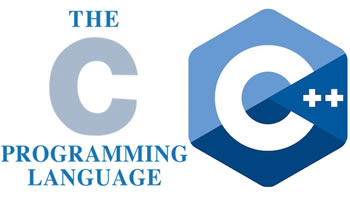Difference between Structured and Unstructured Programming Language
Key Difference: The main difference between structured and unstructured programming language is that a structured programming language allows a programmer to code a program by diving the whole program into smaller units or modules. In unstructured programming language, the program must be written as a single continuous, i.e. nonstop or unbroken block.

When it comes to programming, there are two main types: Structured and Unstructured Programming. Each has its own languages. Unstructured Programming is historically the earliest type of programming that was capable of creating Turing-complete algorithms. As it was the earliest, it had its own set of advantages and disadvantages. Eventually, unstructured programming morphed and evolved into structured programming, which was easier to use. Structured programming eventually evolved into procedural programming and then object-oriented programming. Again, all with their own set of advantages and disadvantages.
With reference to programming, the main difference between structured and unstructured programming language is that a structured programming language allows a programmer to code a program by diving the whole program into smaller units or modules. This makes it easier to code, as the programmer can work on one segment of the code at a time. This also allows the programmer to check the module individually, before combining it with the program. Hence, it becomes easier to modify and debug, as the programmer can check and modify a single module, while leaving the rest of the program as is.
In unstructured programming language, however, the program must be written as a single continuous, i.e. nonstop or unbroken block. This makes it a bit complicated as the whole program is taken as one unit. Also, it becomes harder to modify and to debug, such as if there is a bug in the program, which there always is, the programmer much check the code of the entire program, as opposed to just one module.
 Additionally, unstructured programming languages allow only basic data types, such as numbers, strings and arrays (numbered sets of variables of the same type), which is not the case with structured programming languages. However, unstructured programming languages are often touted for providing freedom to programmers to program as they want. Structured programming languages often make extensive use of subroutines, block structures and for and while loops, as opposed to using simple tests and jumps such as the GOTO statement which could lead to “spaghetti code”, which unstructured programming languages do. Still, spaghetti code is highly difficult to follow and to maintain, which is why many people don’t prefer to use unstructured programming languages.
Additionally, unstructured programming languages allow only basic data types, such as numbers, strings and arrays (numbered sets of variables of the same type), which is not the case with structured programming languages. However, unstructured programming languages are often touted for providing freedom to programmers to program as they want. Structured programming languages often make extensive use of subroutines, block structures and for and while loops, as opposed to using simple tests and jumps such as the GOTO statement which could lead to “spaghetti code”, which unstructured programming languages do. Still, spaghetti code is highly difficult to follow and to maintain, which is why many people don’t prefer to use unstructured programming languages.
Comparison between Structured and Unstructured Programming Language:
|
|
Structured Programming Language |
Unstructured Programming Language |
|
Also known as |
Modular Programming |
Non-structured Programming |
|
Subset of |
Procedural Programming |
None. It is the earliest programming paradigm. |
|
Purpose |
To enforce a logical structure on the program being written to make it more efficient and easier to understand and modify. |
Just to code. |
|
Programming |
Divides the program into smaller units or modules. |
The entire program must be coded in one continuous block. |
|
Precursor to |
Object-oriented programming (OOP) |
Structured programming, specifically procedural programming and then object-oriented programming. |
|
Code |
Produces readable code |
Producing hardly-readable (“spaghetti”) code |
|
For Projects |
Usually considered a good approach for creating major projects |
Sometimes considered a bad approach for creating major projects |
|
Freedom |
Has some limitations |
Offers freedom to programmers to program as they want |
|
Allowed data types |
Structured languages allow a variety of data types. |
Non-structured languages allow only basic data types, such as numbers, strings and arrays (numbered sets of variables of the same type). |
|
Modify and debug |
Easy to modify and to debug |
Very difficult to modify and to debug |
|
Languages |
C, C+, C++, C#, Java, PERL, Ruby, PHP, ALGOL, Pascal, PL/I and Ada |
early versions of BASIC (such as MSX BASIC and GW-BASIC), JOSS, FOCAL, MUMPS, TELCOMP, COBOL, machine-level code, early assembler systems (without procedural metaoperators), assembler debuggers and some scripting languages such as MS-DOS batch file language. |
Image Courtesy: blog.rimazrauf.com, ypologistisglossarion.blogspot.com









Add new comment